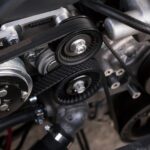Buying used auto parts is a smart way to save money and reduce waste—but not all parts are created equal. Whether you’re sourcing from a salvage yard or an online marketplace, knowing what to look for can make the difference between a great deal and a costly mistake. This practical checklist will help you spot high-quality used parts and shop with confidence, no matter what kind of repair you’re tackling.
Where to Buy Used Auto Parts
There are several places to find quality used auto parts, each with its own pros and cons. Local salvage yards are great for hands-on shoppers who want to inspect parts in person. Many now offer searchable online databases, making it easier to find what you need before visiting.
Certified used parts dealers and auto recycling networks often inspect and clean parts before resale, offering more peace of mind. Online marketplaces like Used car parts inventory from Kenny U-Pull let you browse by vehicle make, model, and part type—perfect for comparison shopping and locating hard-to-find components.
No matter where you buy, always look for reputable sellers with good reviews and a clear return or exchange policy. That way, you can get the part you need without the stress.
The Used Auto Parts Quality Checklist
Before you buy any used part—whether online or in person—it’s important to know what you’re looking at. Use this checklist to help you assess the quality and reliability of a used auto part before committing.
Match the OEM Part Number
Always start by checking the original equipment manufacturer (OEM) part number. This ensures the used part is an exact match for your vehicle’s make, model, and year. Even parts that look identical can have slight differences in fit or function. If you’re unsure, contact your dealership or check your owner’s manual for the correct number.
Examine for Visible Damage
Take a close look at the part for any signs of wear or damage. Cracks, deep rust, warped edges, or stripped bolts are all red flags. Also, check mounting points and connectors—they should be intact and free from excessive wear. If the part is painted, check for inconsistencies that may indicate a hidden repair or cosmetic cover-up.
Ask About the Part’s History
A reliable seller should be able to tell you where the part came from. Was the donor vehicle in an accident? How many kilometers were on it? A used part pulled from a low-mileage, well-maintained vehicle will likely last longer than one from a high-mileage or wrecked car.
Look for Original Labels and Markings
Factory parts often come with etched or stamped markings. These identifiers can help confirm authenticity. Be cautious of parts that look overly cleaned or repainted—they may be refurbished or hiding damage. In some cases, missing labels might suggest the part was stolen or tampered with.
Test Moving Components (If Possible)
For parts like alternators, motors, fans, or pumps, test the moving pieces before buying. They should turn smoothly and without resistance. Grinding noises, looseness, or difficulty turning may indicate internal damage. If you’re buying online, ask the seller to provide a short video demonstrating the part in use, if applicable.
Confirm the Return Policy or Warranty
Even used parts should come with a basic return window or limited warranty. A 30-day return policy is common and shows the seller stands behind the product. Be wary of sellers who offer “as-is” parts with no returns—especially if you haven’t been able to inspect the item yourself.
When Not to Buy Used Parts
While buying used can be a great money-saver, there are certain parts where safety and reliability should never be compromised. Safety-critical components—like airbags, brake pads, and seat belts—should always be purchased new. These items degrade over time and can fail when you need them most.
Wear-and-tear parts like spark plugs, filters, belts, and gaskets are also best bought new. They’re relatively inexpensive and play a key role in keeping your engine running smoothly.
Additionally, electronic components such as sensors, ECUs, or modules can be hit-or-miss when purchased used. If they fail after installation, diagnosing the issue can be frustrating and costly.
As a rule of thumb, if a part’s failure could affect your safety or the long-term health of your vehicle, invest in a new one. Use used parts where it makes sense—but always prioritize safety and reliability.
Conclusion
Buying used auto parts can be a smart, budget-friendly option—if you know what to look for. By following a simple checklist and buying from reputable sources, you can save money without sacrificing safety or performance. Just remember: when in doubt, do your research, ask questions, and never compromise on critical components. With the right approach, used parts can keep your car running smoothly for thousands of kilometres to come.










